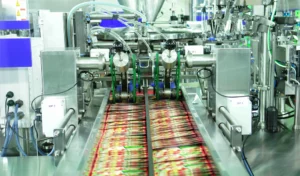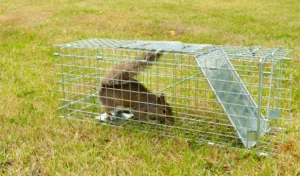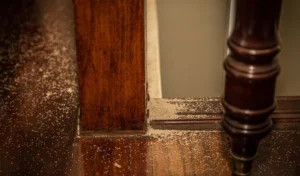Being a hydroponic cultivator, you understand the paramount importance of maintaining plant health and safeguarding them against pests. Among the numerous strategies at your disposal, employing sticky traps emerges as one of the most potent. Each year, billions of dollars are expended on pesticides, often leading to substantial wastage due to improper usage. Enter the Yellow Sticky Glue Traps, a simple yet highly effective solution that not only curtails pesticide usage but also enhances the safety of your home and garden. In this blog post, we shall delve into the advantages of adopting Yellow Sticky Glue Traps, conveniently accessible at Safe-Killer.
Yellow Sticky Glue Traps represent a highly efficient tool for safeguarding your garden and indoor plants against a broad spectrum of airborne pests. Comprising extended strips of adhesive paper rendered in a vibrant yellow hue, these traps are strategically colored to allure flying insects, ensnaring them in the glue’s grip, rendering them immobile. Their user-friendly nature allows for placement in any troublesome areas of your garden or residence where flying insects are a concern. In the following blog post, we will explore the utilization of Yellow Sticky Glue Traps to shield your plants from pests, maintaining an insect-free environment within your home.
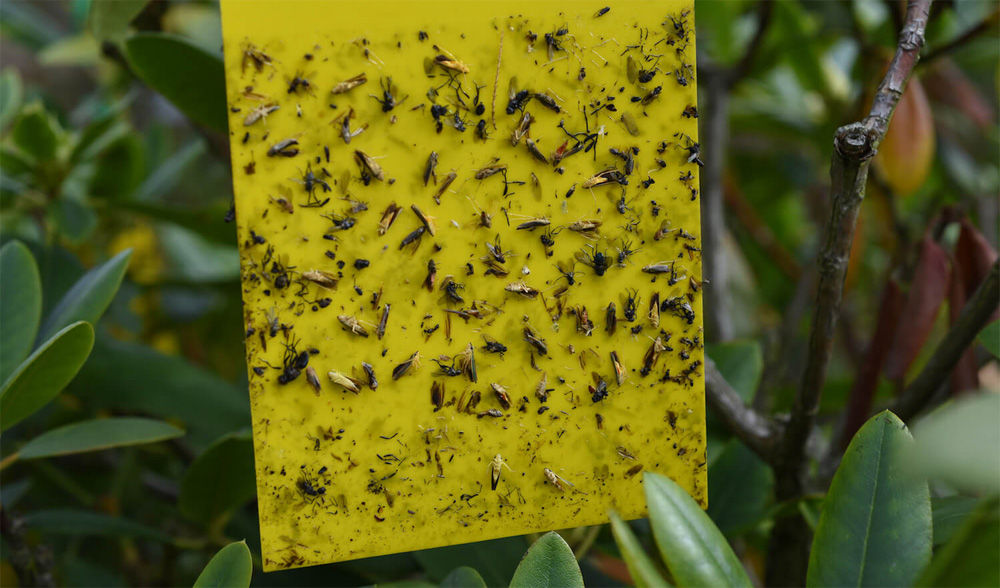
How Yellow Sticky Traps Function
Yellow sticky glue traps are equipped with a non-toxic adhesive that lures in flying insects. The vibrant yellow color of these traps further amplifies their attractiveness to insects, increasing their efficacy. Once these insects alight on the trap, they become immobilized by the adhesive and lose their ability to take flight. You can position these traps in proximity to plants or suspend them from the ceiling to capture airborne insects. These traps are disposable and should be substituted every few weeks or when they become saturated with captured insects.
Pests Attracted by Yellow Sticky Traps
When considering the utilization of yellow sticky glue traps for safeguarding your garden and indoor plants from flying insects, it’s crucial to comprehend the types of pests these traps can allure. While they excel at ensnaring a wide array of flying pests, including whiteflies, fungus gnats, and aphids, they may also entice beneficial insects like bees and ladybugs. Vigilant trap monitoring is essential, allowing for the removal of any beneficial insects that may have inadvertently adhered to the traps. Furthermore, proper disposal of the traps is paramount to avert potential harm to wildlife. By gaining insight into the pests these traps can attract, you can employ them effectively for plant protection while safeguarding beneficial insects from harm.
How to Use Them
1. Place the traps near plants or hang them from the ceiling.
2. Make sure the traps are not touching the plants to avoid trapping beneficial insects.
3. Check the traps regularly and replace them when they become full of insects.
4. Use multiple traps for larger areas or infestations.
5. Yellow sticky glue traps can be used in conjunction with other pest control methods for a more comprehensive approach.
Tips for Using Yellow Sticky Glue Traps Effectively
1. Hang the traps at the right height: Hang the traps at the same height as your plants to attract the pests that are most likely to attack them.
2. Use multiple traps: Place multiple traps throughout your grow room or greenhouse to increase the chances of catching pests.
3. Replace the traps regularly: Replace the traps every 2-3 weeks or when they become covered in insects or debris.
4. Use them as a monitoring tool: Use the traps to monitor the pest population in your grow room or greenhouse.
5. Combine with other pest control methods: Use the traps in combination with other pest control methods, such as beneficial insects or pesticides, for maximum effectiveness.
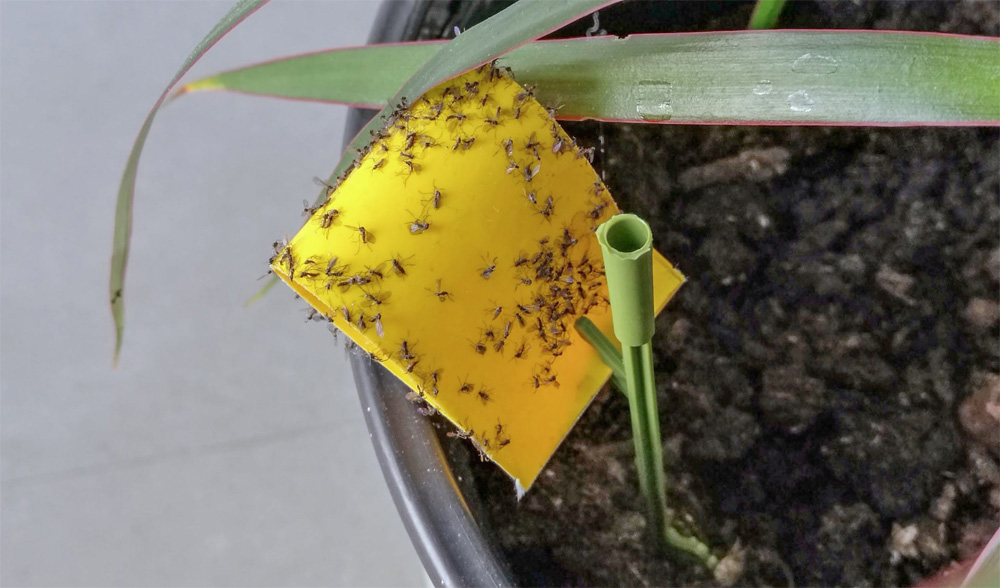
Why Sticky Traps Are Better than Sticky Stakes
In hydroponic cultivation, both sticky traps and sticky stakes serve as viable options for insect capture, yet sticky traps offer certain advantages over sticky stakes. Notably, sticky traps provide a larger coverage area, rendering them more efficient in trapping flying insects such as whiteflies and thrips, which commonly infest hydroponic systems. Additionally, they boast user-friendliness and entail less maintenance compared to sticky stakes. Utilizing sticky traps involves the straightforward process of unrolling the strip and hanging it within your hydroponic arrangement, whereas sticky stakes necessitate inserting the stake into the growing medium, which can be time-intensive. Ultimately, the choice between sticky traps and sticky stakes hinges on the specific requirements of your hydroponic setup and the type of insect control you aim to achieve.
Why Sticky Traps Are Better than Neem Oil
While neem oil serves as a natural insecticide with potential effectiveness in pest control for hydroponic cultivation, sticky traps may offer distinct advantages for several reasons. Sticky traps, due to their capacity for wider coverage, excel in trapping flying insects like whiteflies and thrips, which are prevalent pests in hydroponic systems. Additionally, they present a user-friendly and low-maintenance alternative when compared to the application of neem oil, which entails dilution and spraying onto the plants. Furthermore, sticky traps are non-toxic, in contrast to neem oil, which may pose harm to beneficial insects within the hydroponic environment. Ultimately, the choice between the two methods will be contingent on the particular requirements of your hydroponic setup and the specific nature of the pest infestation.
Why Sticky Traps Are Better than Insecticidal Soap
Opting for sticky traps over insecticidal soap can be a preferable choice when it comes to pest management in hydroponic cultivation. Sticky traps demonstrate superior efficacy in ensnaring flying insects, such as whiteflies and thrips, which are prevalent pests in hydroponic systems. In contrast, insecticidal soap may prove more effective at dealing with crawling insects like spider mites. Furthermore, sticky traps demand less maintenance and offer greater user-friendliness compared to insecticidal soap, which necessitates dilution and application via spraying onto the plants. Notably, sticky traps are non-toxic, while insecticidal soap can potentially harm beneficial insects within the hydroponic system. Ultimately, the selection between these methods hinges on the specific requirements of your hydroponic setup and the nature of the pest infestation at hand.
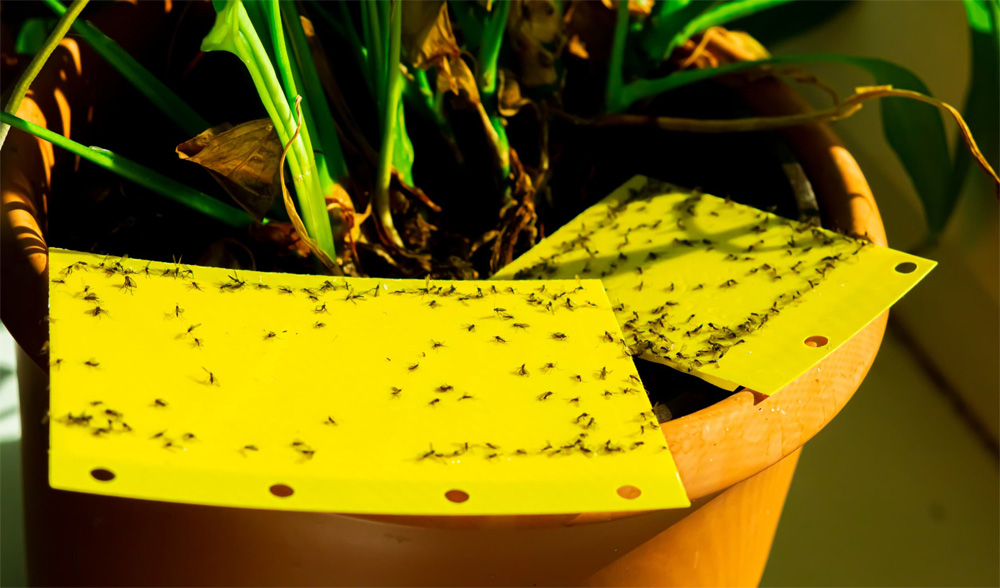
Why Sticky Traps Are Better than Beneficial Insects
Opting for sticky traps over beneficial insects in the context of pest control for hydroponic cultivation can be a preferable choice for several compelling reasons. Sticky traps exhibit a high degree of effectiveness in capturing flying insects, such as whiteflies and thrips, which can pose a challenge for beneficial insects to manage effectively. Furthermore, sticky traps demand minimal upkeep and are entirely non-toxic, in stark contrast to the introduction of beneficial insects into the hydroponic system, which can be a time-intensive endeavor and may not be suitable for addressing all pest varieties.
Additionally, the proactive nature of sticky traps allows for preventative use, enabling the interception of pests before they escalate into a significant issue. In contrast, the introduction of beneficial insects is often a reactive measure, typically undertaken after an infestation has already taken root. Ultimately, the choice between these two approaches will be contingent on the specific requirements of your hydroponic setup and the precise nature of the pest infestation you aim to address.
Conclusion
In summary, the utilization of yellow sticky glue traps emerges as a highly efficient method to shield your garden and indoor plants from flying insects. By embracing these non-toxic traps, you can substantially diminish your reliance on harmful pesticides while concurrently enhancing the safety of your home and garden. These traps operate by alluring flying insects through their vibrant hues and adhesive properties. To maximize their effectiveness, it’s imperative to deploy them strategically, vigilantly monitor their performance, and replace them on a regular basis.
By adhering to these guidelines and integrating sticky glue traps into your pest management strategy, you can adeptly regulate pests in your garden or hydroponic system without endangering beneficial insects or your plants.
Explore a series of physical pest control tools including Yellow Sticky Glue Traps, Bug Zappers and Light Traps, Humane and Live Animal Traps, Reusable Ranch Fly Traps which can be tailored to your specific needs at Safe-Killer.com. Why not have a try and experience the advantages firsthand?

